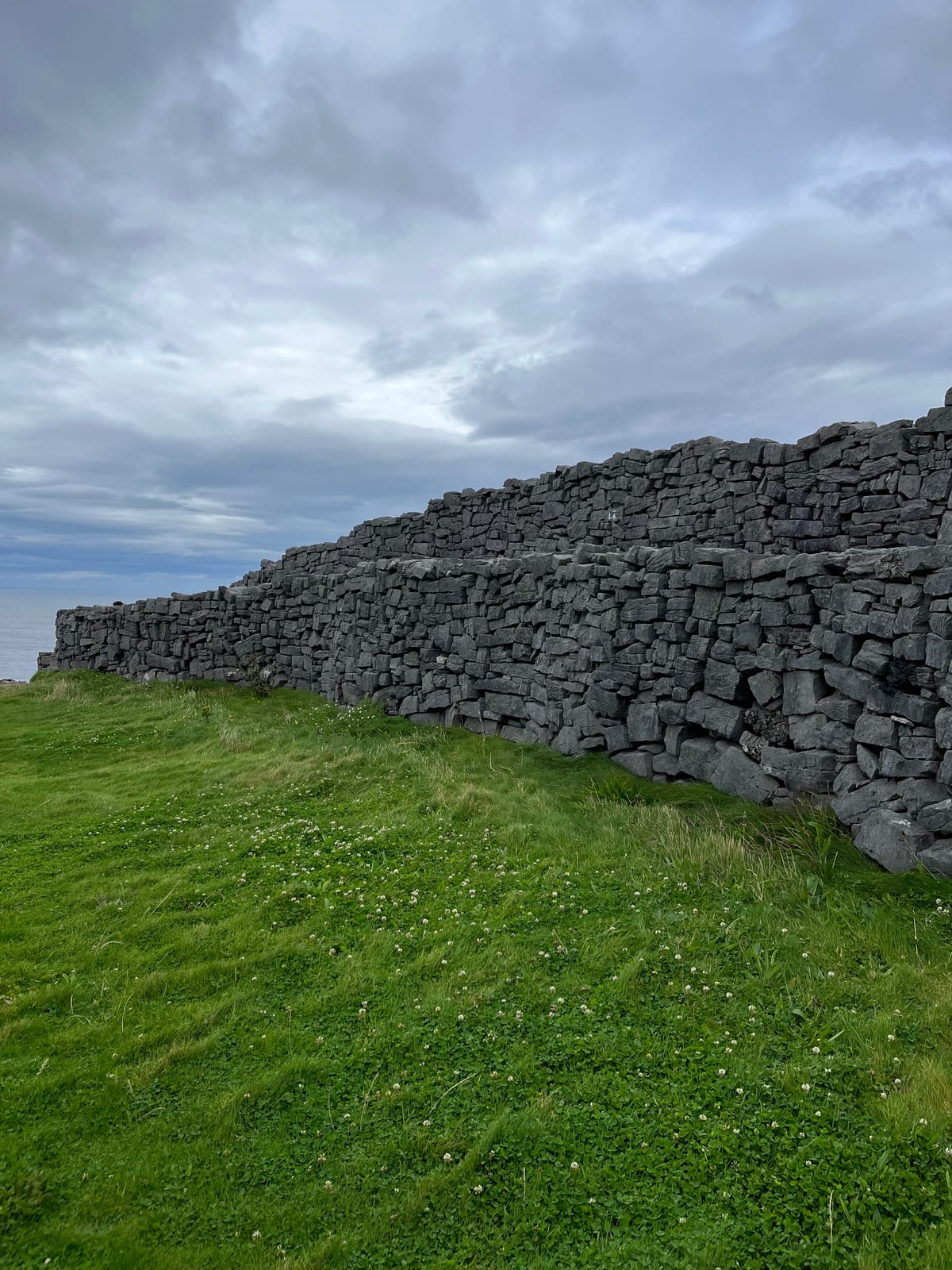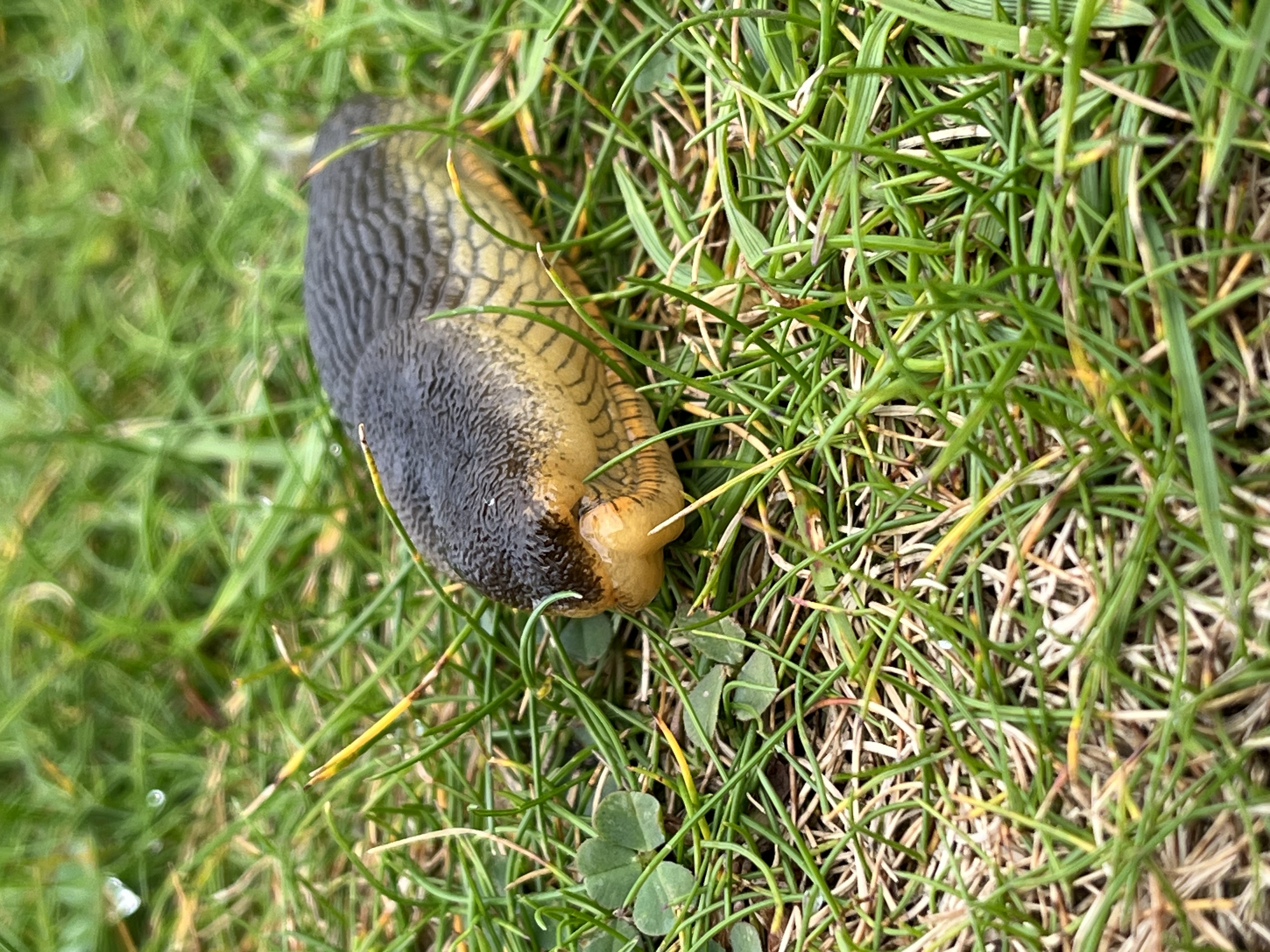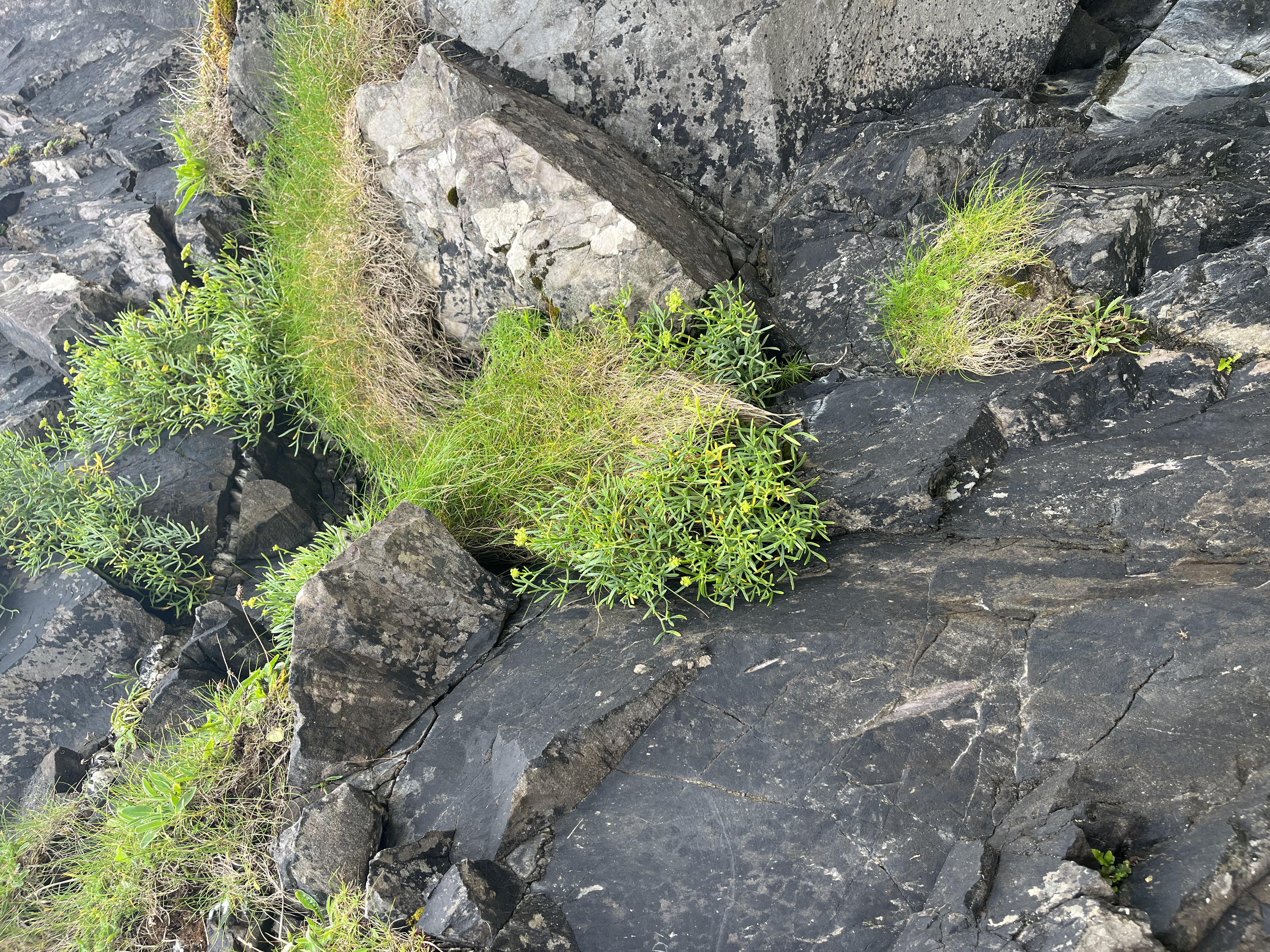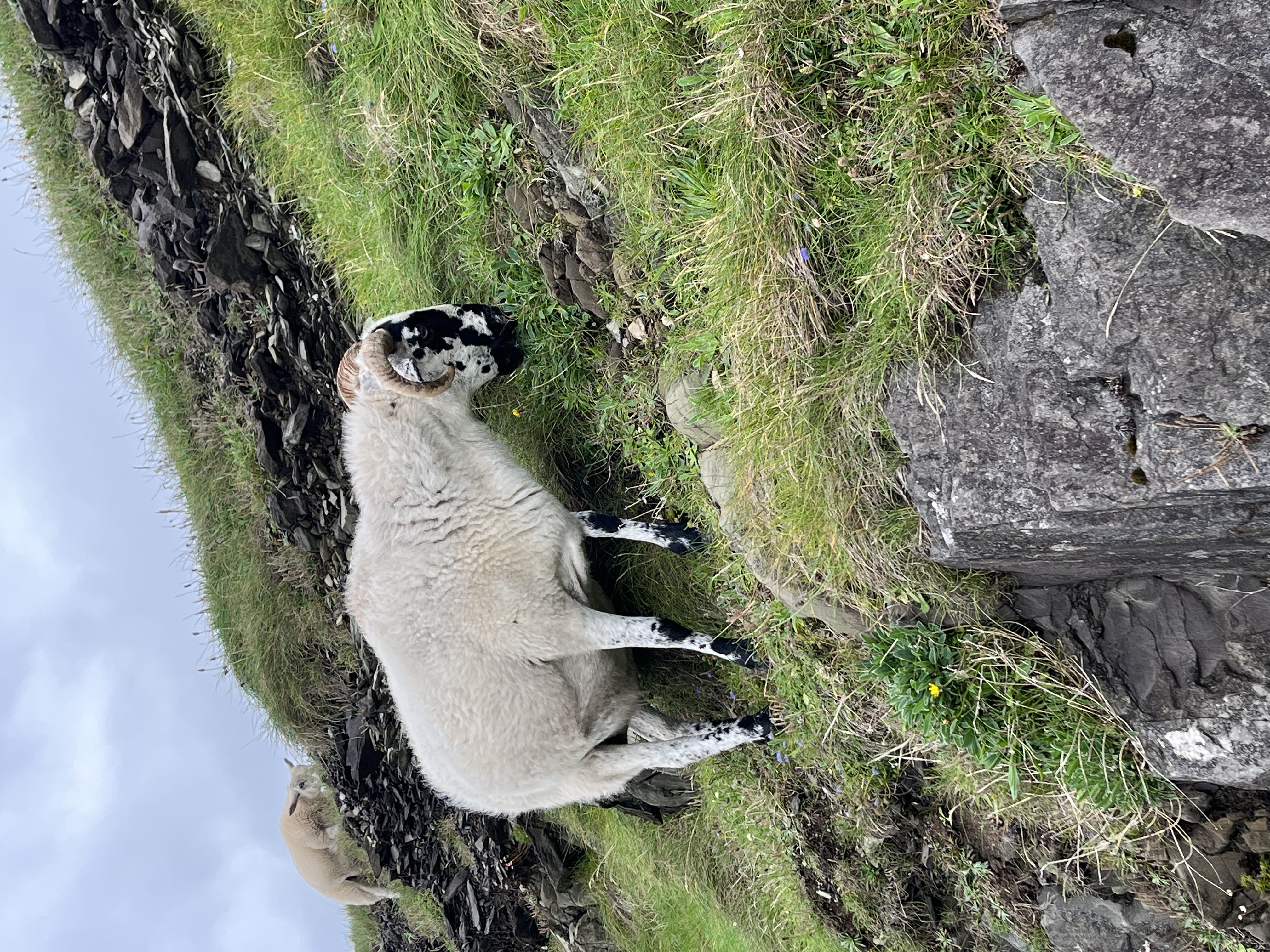Visiting the Old Sod
And the things that live on top of it

I thought I would write a quick dispatch from vacation because I absolutely hate breaking a streak, and I’ve been on one for 12 weeks of writing this newsletter. We are visiting in Ireland and it’s been great. I suppose I should say, “It’s been grand,” but if I’m totally honest, I think it sounds corny to adopt phrases I’ve heard as a tourist and act like I would actually say them.
The photo above was taken at Dun Aonghasa, a fort at Kilmurvy in Inis Mor, one of the Aran Islands. The fort is a half-circle composed of the limestone that bubbles up from the Irish earth and is surrounded by cliffs on the open side and fields of boulders outside its walls. The people who built it would have been protecting themselves from land invaders. The earth is in fact sod; there are six inches of top soil above the hard rock earth, upon which grows soft and dense grasses and clovers. I saw this ornery little creature crawling along the velvety earth. It’s hard to imagine being a prehistoric human and finding it habitable, but then, I’m a soft, late capitalism human, so what do I know.

Our visit to Ireland has been a whirlwind. We had a 36 hours in Dublin and then took to train up to Belfast, where we took a black taxi tour. Our driver Seamus showed up the conflict zones and neighborhoods affected by ‘the troubles,’ and while he didn’t share too much personal history, he noted that in 1971, he was shot twice, imprisoned, and became a father for the first time. It was big year, “believe it or not,” he said. The Catholic areas remain explicitly political and Falls Road-Shankill Road area does feel like there’s an entrenched truce rather than actual peace. At the same time, the old gaol is a museum, while the courthouse where all the political prisoners were tried (or “tried”) has fallen into disrepair. There’s a For Sale sign in front of it, saying that the property has been zoned for a hotel.
For the trip to Inis Mor, we opted to go by prop plane from Connemara, which some on the island consider “posh” but at 36 euros round trip, it’s worth it to not be on a long ferry ride with a thousand other tourists. We also got there earlier than the ferries and rented bikes. If Brook had told me we would be riding more than eleven miles on a windy hill, I might have refused, but I’m glad we did it. I can’t remember feeling happier than riding through the Irish countryside on a bike.
When I visit a new place, I try to imagine what it would be like to move there. I don’t imagine the lives of the people living there, I imagine what it would be like for me to pick up my life and move to that place. I know exactly what it would be like if I moved to Ireland. Much of it reminds me of other places I’ve lived or spent time in but it isn’t the kind of place where I need to come back as a tourist. I don’t really need or want to live here rather than where I do live, but I would come back here to do a writing retreat. It’s really no wonder at all that Ireland is known for its writers and poets and musicians. The place is all atmospherics and no distractions. The beauty is soft and hard and everything grows in tight, tough, colorful ways.

Which calls for some book recommendations. On the way here, I read Big Girl, Small Town by Michelle Gallen, about a young woman in Northern Ireland trying to live a normal life in the aftermath of her grandmother’s murder and her father’s disappearance. Sounds grim, but the narrator Majella is somehow clueless and funny and observant and likable.
Another great book (and very short!) is Small Things Like These by Claire Keegan. The fuel delivery man discovers a girl who has runaway from the convent school in town. When he returns her, he worries he made the wrong choice. I devoured this book in one sitting. Beautifully written. I downloaded Keegan’s more recent book Foster for this trip and I’ll probably read it on the way home.
Inis Mor, with its lonely houses atop sweeping cliffs, reminded me of The Sea, The Sea by Iris Murdoch, which I read many years ago. I didn’t remember the plot, just the feeling of the book. Gray and green, windswept and craggy. The story was deeply disturbing. I found a summary on Wikipedia, which I will further summarize: Playwright and director Charles Arrowby moves to a secluded house by the sea to write his memoirs. While there, he becomes obsessed with his first love Mary Hartley Fitch and attempts to persuade her to elope with him, eventually trying to kidnap her to achieve his goals.
In my memory, Mary was the narrator/protagonist but in fact, Arrowby is the narrator. Murdoch is such a great writer that she can give voice to the stalker while holding his victim sympathetically? It reminds me of Lolita, except Mary is entering late adulthood. The Sea, The Sea won the Booker Prize in 1978. Murdoch was also a philosopher. She’s also now going on my hero list.
Okay, one more picture. Enjoy this bad-ass sheep who was hanging out in a parking lot I was in today.




